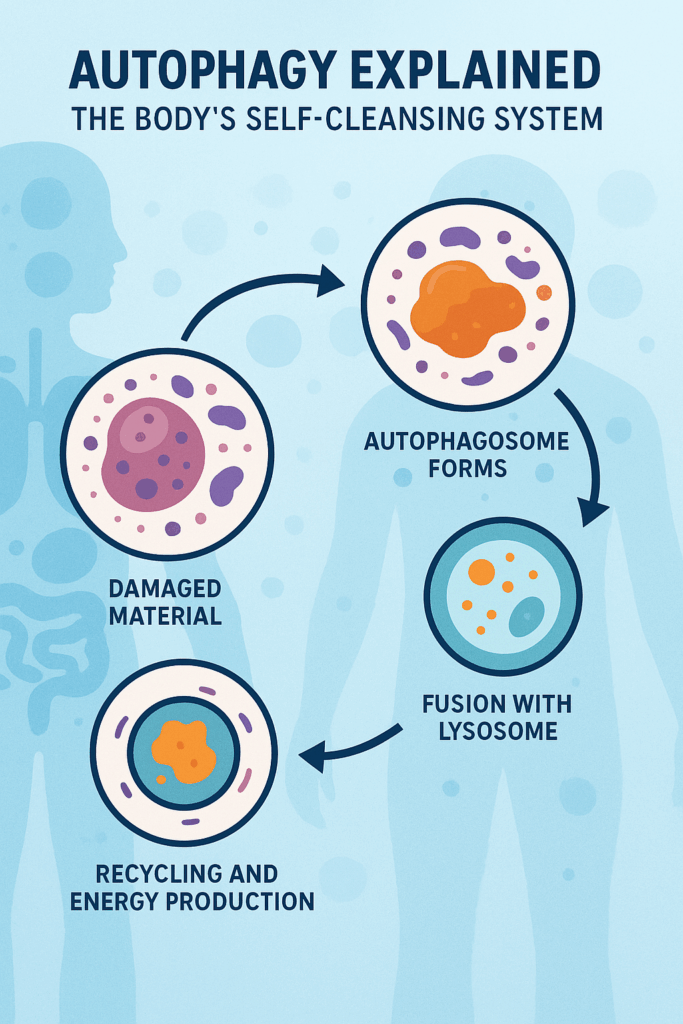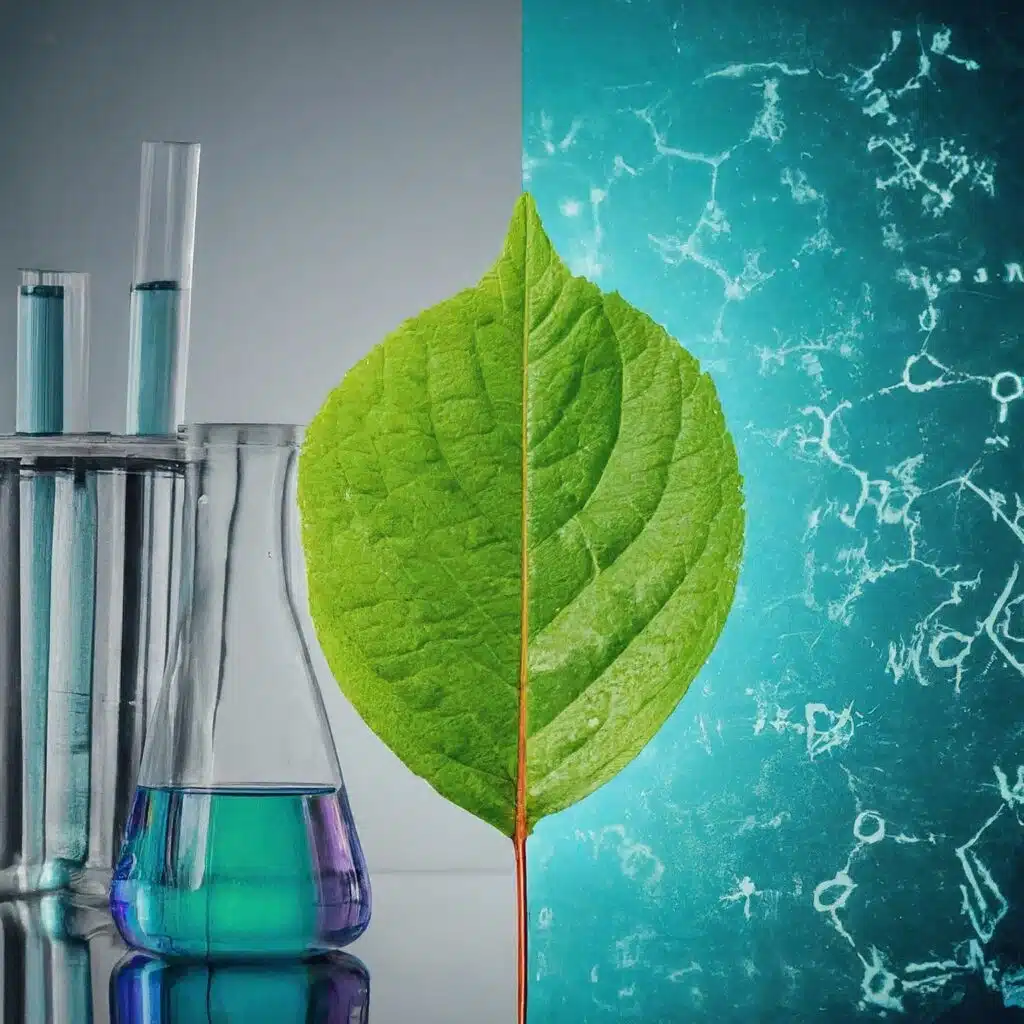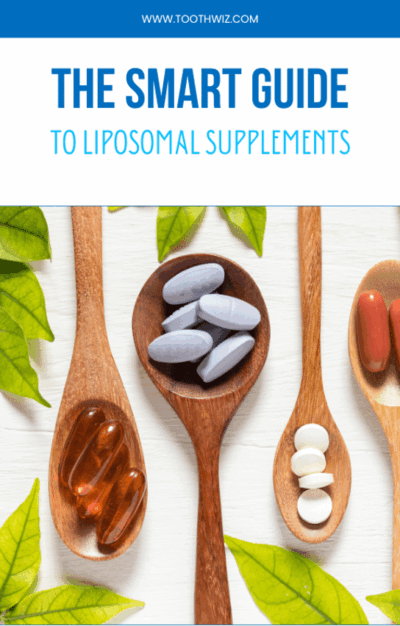What Is This Cellular Process?
Autophagy (pronounced aw-TAW-fuh-jee) is your body’s built-in self-cleaning system. The word comes from Greek and means “self-eating.” Sounds awful —but it’s one of the healthiest things your body can do. During this process, cells break down and recycle damaged or unused components to generate energy and support healing.
Think of it like your body’s own cleanup crew: damaged proteins and worn-out parts are wrapped in a bubble-like membrane called an autophagosome, delivered to the lysosome, and digested for reuse. The lysosome is a specialized part of the cell packed with powerful enzymes. Once it fuses with the autophagosome, it digests the unwanted material inside, turning it into usable energy or raw materials for cellular repair. This natural process helps maintain balance and vitality on a cellular level.
Why Cellular Clean-Up Matters
When working efficiently, autophagy helps you stay younger, healthier, and more resilient. Some of its most important health benefits include:
- Slowing aging by clearing out cellular waste
- Protecting the brain and nervous system
- Reducing inflammation and oxidative stress
- Strengthening immune defenses
- Supporting better metabolism and insulin function
This biological renewal system also kicks in when your body faces mild stress—like fasting or intense exercise—helping you adapt and grow stronger.
Fasting as a Trigger for Renewal
One of the most effective and well-documented ways to activate autophagy is through intermittent fasting. After about 12–16 hours without food, insulin levels drop, and your body begins breaking down internal components for fuel.
Personally, I follow a 16:8 intermittent fasting schedule several days a week, and I’ve experienced:
- Steady weight loss
- Better digestion
- Improved blood sugar control
- Noticeably increased energy
This natural shift in metabolism allows your body to clear out what it no longer needs—revitalizing cells from the inside out.
How Low-Carb Eating Supports This Process
Adopting a carnivore-inspired or low-carb diet also contributes to cellular renewal. With fewer blood sugar spikes and lower insulin levels, your body becomes more efficient at burning fat and reusing damaged components.
Ketosis, often triggered by fasting or high-fat diets, enhances this cellular repair response—particularly in the brain and liver.
Simple Ways to Support Cellular Health
Want to encourage autophagy without overthinking it? Here are a few practical steps you can take:
- Fast for 14–18 hours a few times per week
- Exercise regularly—especially strength training and cardio
- Prioritize quality sleep
- Minimize sugar and snacking between meals
- Consider nutrients like green tea extract, spermidine, or resveratrol
Looking for professional-grade support? Visit my online supplement dispensary to browse options that promote metabolic balance and cellular vitality.
Final Thoughts on Cellular Self-Cleansing
Autophagy is more than a trendy term—it’s a critical part of your body’s defense and repair system. Through smart lifestyle choices like fasting, clean eating, and movement, you can harness its power for better energy, stronger immunity, and greater longevity.
At ToothWiz Health, we believe wellness starts from within—at the cellular level. By supporting these internal processes naturally, you give your body the tools it needs to heal, renew, and thrive.





